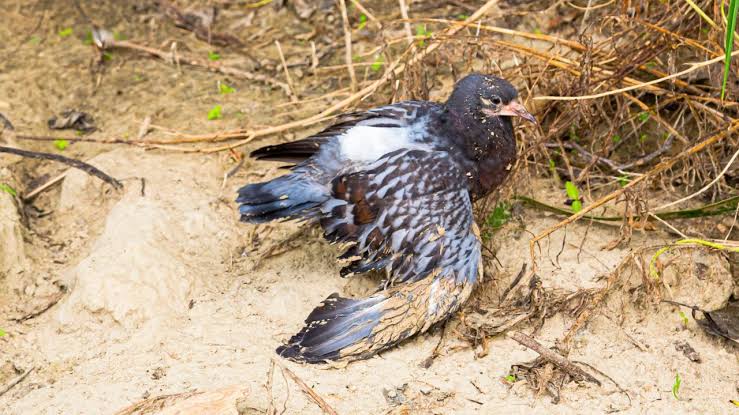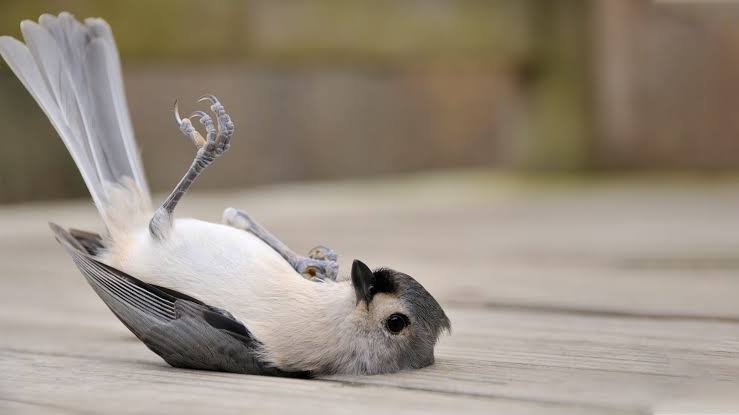Birds are a group of warm-blooded, egg-laying, feathered animals with beaks, wings, and hollow bones. They are a diverse group of animals with over 10,000 species, ranging in size from the tiny hummingbird to the ostrich, which can stand over 9 feet tall.
Birds are found all over the world, in a variety of habitats including forests, grasslands, deserts, and even the ocean. They play important roles in ecosystems as pollinators, seed dispersers, and predators of insects and other small animals.
Birds are also valued by humans for their beauty, song, and as sources of food, feathers, and companionship. They have a unique respiratory system that allows them to fly, and many species migrate long distances each year to breed or find food.
Some examples of common birds include sparrows, pigeons, ducks, chickens, and eagles. Birds are also a popular subject of study for scientists, who use them as models to understand topics such as genetics, behavior, and evolution.
Read Also: Health Benefits and Uses of Zobo Leaves
Caring for Injured Birds (Injured Bird Care Guide)

Assess the situation: Before attempting to care for an injured bird, assess the situation to ensure your safety and the bird’s welfare. If the bird is in a dangerous location, such as in the middle of a busy road, move it to a safe area before attempting to handle it.
Handle the bird with care: Birds can be easily stressed and injured further if handled improperly. To handle the bird, wear gloves to protect yourself from any potential diseases or parasites. Gently and carefully pick up the bird, making sure to support its body and keep its wings close to its body to avoid further injury.
Provide a safe and comfortable environment: Once you have the bird in your care, provide a safe and comfortable environment for it to rest and recover. Place the bird in a well-ventilated cardboard box with a soft towel or cloth lining the bottom. Keep the box in a warm and quiet area, away from any pets or other disturbances.
Provide food and water: If the bird is able to eat and drink on its own, provide it with fresh water and appropriate food for its species. However, if the bird is unable to eat or drink, seek the assistance of a licensed wildlife rehabilitator.
Seek professional help: If the bird has significant injuries or if you are unsure how to properly care for it, seek the assistance of a licensed wildlife rehabilitator or a veterinarian who specializes in avian care. They will be able to provide the necessary medical treatment and care for the bird.
It is important to remember that caring for an injured bird is a serious responsibility and should only be undertaken if you have the necessary knowledge and experience to do so safely and effectively.
Read Also: How to Make Neem Insecticide from Neem Leaves (Dogoyaro)
Injured Birds in Yard

Approach with care: Approach the bird slowly and quietly, as sudden movements or loud noises can frighten the bird and cause further injury. Keep in mind that the bird may be in pain and may try to bite or scratch if it feels threatened.
Assess the situation: Assess the bird’s condition from a safe distance. If the bird is unable to move or appears to be in distress, it may need assistance. If the bird is a predator or appears to be a danger to other birds or pets, it may be best to contact a wildlife rehabilitator or animal control officer.
Provide a safe and quiet environment: If the bird appears to be injured but able to move, provide a safe and quiet environment for it to rest and recover. This can include a cardboard box or carrier with a soft towel or cloth lining the bottom. Keep the box in a warm and quiet area, away from any pets or other disturbances.
Contact a wildlife rehabilitator: If the bird appears to have significant injuries or if you are unsure how to properly care for it, contact a licensed wildlife rehabilitator for assistance. They will be able to provide the necessary medical treatment and care for the bird.
Observe from a distance: If the bird appears to be recovering or if you are waiting for a wildlife rehabilitator to arrive, observe the bird from a safe distance. Do not handle the bird or attempt to feed it unless instructed to do so by a wildlife rehabilitator.
Remember that caring for injured wildlife can be dangerous and should only be done by trained professionals. It is important to contact a licensed wildlife rehabilitator or animal control officer for assistance, as they have the knowledge and experience necessary to provide the best care for injured birds and other wildlife.
I Found an Injured Bird (Proper Care Guide or Process)

Coming across an injured bird can be a distressing and worrying experience, especially if you are an animal lover. The sight of a small, helpless creature in pain can tug at your heartstrings, and you may feel compelled to do something to help. If you find yourself in this situation, there are a few things you can do to provide immediate care and ensure the bird has the best chance of recovery.
The first thing to do when you find an injured bird is to approach it carefully. If the bird is conscious and able to move, it may try to fly away or become agitated, so it’s important to be calm and gentle. Approach the bird slowly and quietly, talking to it in a soft voice to let it know you are there. If the bird is unconscious or unable to move, approach it carefully and without making any sudden movements.
Once you are close to the bird, assess its condition. Look for any signs of injury or distress, such as a broken wing, a limp, or difficulty breathing. If the bird is bleeding, try to stop the bleeding by applying gentle pressure with a clean cloth or tissue. If the bird is struggling to breathe, place it in a warm, quiet place with good ventilation to help it recover.
If the bird is able to move, try to catch it using a clean towel or cloth. Gently wrap the bird in the towel, making sure to support its wings and body, and place it in a cardboard box with air holes. The box should be lined with soft material, such as a towel or newspaper, to prevent the bird from getting hurt.
Once you have the bird in a safe and secure location, it’s important to contact a local wildlife rehabilitation center or animal rescue organization as soon as possible. These organizations have trained staff who can provide medical care and rehabilitation to injured birds and other animals. They will be able to advise you on the best course of action and provide guidance on how to transport the bird safely to their facility.
In the meantime, you can provide the bird with food and water if it is conscious and able to eat. Offer small pieces of fruits or vegetables, or birdseed if you have it available. Avoid giving the bird milk or bread, as these can be harmful to its digestive system.
Finding an injured bird can be a daunting experience, but it’s important to remember that you can make a difference. By providing immediate care and contacting a wildlife rehabilitation center, you can give the bird the best chance of recovery and ensure that it can return to the wild where it belongs.
